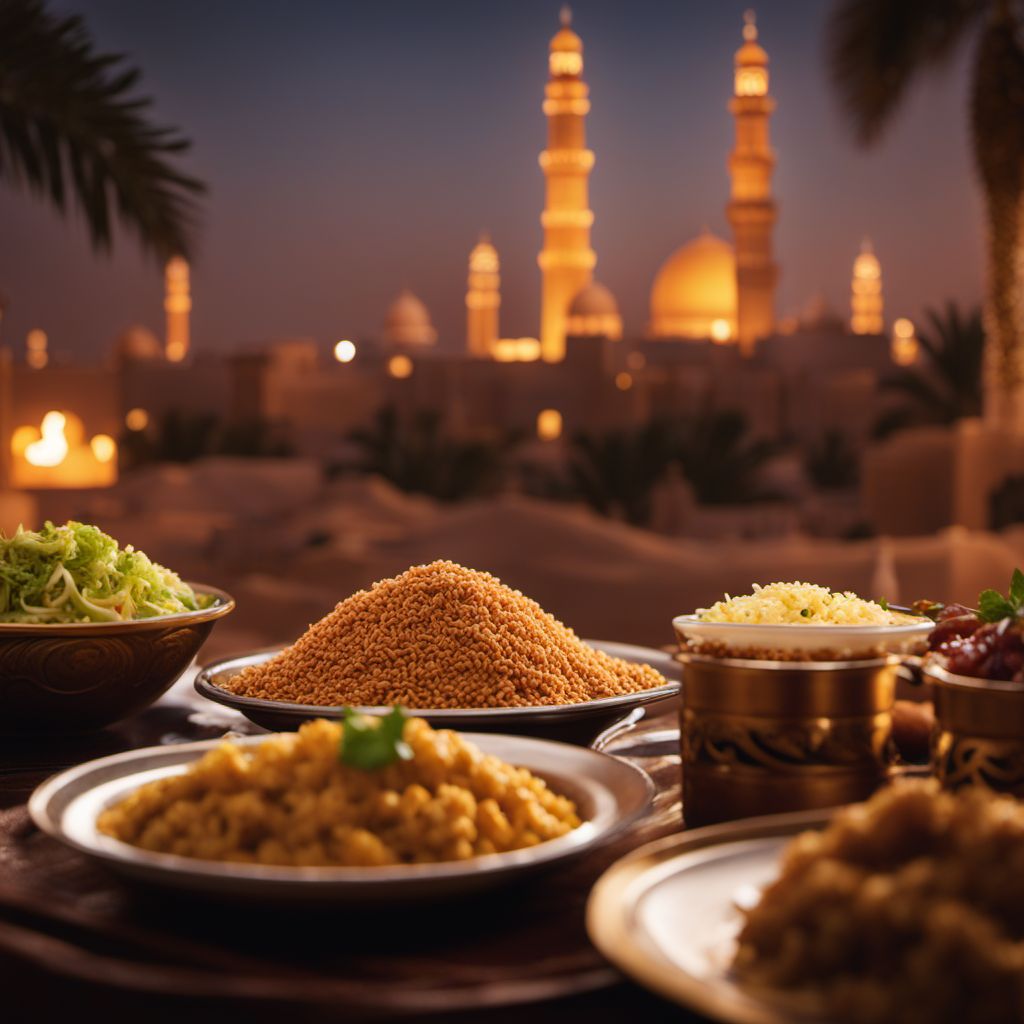
Cuisine
Saudi Arabian cuisine
Saudi Arabian cuisine is characterized by its use of spices, herbs, and marinades. The cuisine features a variety of meats, including lamb, chicken, and fish, as well as rice and breads. Saudi Arabian cuisine also features a variety of desserts, including baklava and kunafa.
Typical ingredients
Lamb, Chicken, Fish, Rice, Bread, Saffron, Cardamom, Cinnamon, Ginger, Garlic, Turmeric, Cumin, Coriander, Fenugreek, Dates, Honey, Rosewater, Almonds, Pistachios
Saudi Arabian cuisine is known for its use of spices and herbs, which are believed to have medicinal properties. Many traditional Saudi Arabian dishes are also believed to have aphrodisiac properties.
More cuisines from this region...
Qatari cuisine, Emirati cuisine, Kuwaiti cuisine, Yemeni cuisine, Omani cuisine, Bahraini cuisine
History
Saudi Arabian cuisine has a long history dating back to ancient times. The cuisine has been influenced by various cultures and civilizations, including the Persians, Ottomans, and British. Saudi Arabian cuisine has also been influenced by the country's location on the Arabian Peninsula, which has led to the use of dates and other desert fruits in many dishes. In recent years, Saudi Arabian cuisine has become more diverse, with the introduction of new ingredients and cooking techniques.
Cultural significance
Food is an important part of Saudi Arabian culture and is often served in large quantities to show hospitality. Traditional Saudi Arabian meals are often served on a large communal platter, with guests using bread to scoop up the food. Coffee is also an important part of Saudi Arabian culture and is often served with dates as a sign of hospitality.
Health benefits and considerations
Saudi Arabian cuisine is generally high in fat and calories, due to the use of oils and meats. However, the cuisine also features a variety of healthy ingredients, such as fish, vegetables, and herbs. Some traditional Saudi Arabian dishes, such as kabsa and thareed, are high in sodium due to the use of salt and spices.
Saudi Arabian cuisine dishes

Mofatah al-dajaj
Chicken mafatih
Mofatah al-dajaj is a traditional Yemeni dish that is made with chicken, rice, and a variety of spices. It is a hearty and flavorful dish that is perfect for any occasion.

Muhammar
Muhammar is a traditional sweet rice dish from Bahrain that is typically served during special occasions such as weddings and religious festivals.

Mutabbaq samak
Fish Stuffed Bread
Mutabbaq samak is a traditional Saudi Arabian dish made with fish and a variety of spices.

Ruz al Bukhari
Bukhari-style rice
Ruz al Bukhari is a traditional Saudi Arabian dish that is made with rice, lamb, and a variety of spices.

Qarta
Saudi Arabian meatballs
Qarta is a traditional Libyan dish that is made from lamb or beef and vegetables. The dish is typically served with couscous or bread.
Saudi Arabian cuisine recipes Browse all »

Saudi Arabian Spiced Noodle Soup
Arabian Delight: Fragrant Spiced Noodle Soup

Saudi Arabian-style Domoda
Savory Peanut Stew with a Saudi Twist

Saudi Arabian Bola de Berlim
Delicious Saudi Arabian Donuts: A Sweet Treat from the Middle East

Saudi Arabian Ratatouille
Spiced Vegetable Medley: Saudi Arabian Ratatouille

Chorafali with a Saudi Twist
Savory Saudi Chorafali: A Crunchy Delight with Middle Eastern Flavors

Saudi Arabian Honey-Spiced Cookies
Golden Delights: Saudi Arabian Honey-Spiced Cookies

Mofatah al-dajaj with Spiced Rice and Tomato Sauce
Savory Saudi Arabian Chicken Delight
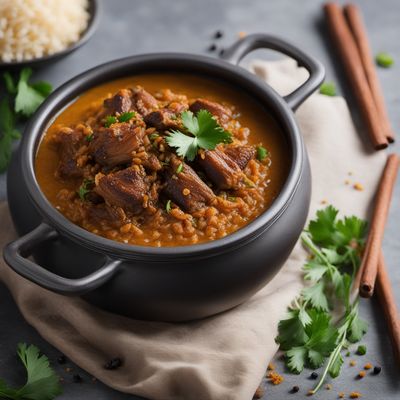
Qarta with Spiced Lamb and Rice
Savory Delight: Spiced Lamb and Rice Qarta

Savory Saudi Arabian Alevropita
Middle Eastern Delight: Saudi Arabian Alevropita
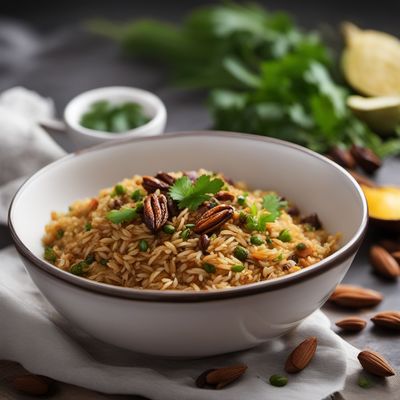
Saudi Spiced Rice with Meat and Nuts
Arabian Delight: Fragrant Spiced Rice with Savory Meat and Crunchy Nuts
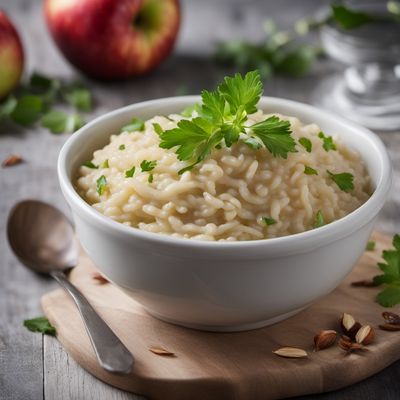
Apple and Cardamom Risotto
Saffron-infused Apple and Cardamom Risotto: A Fusion of Italian and Saudi Arabian Flavors
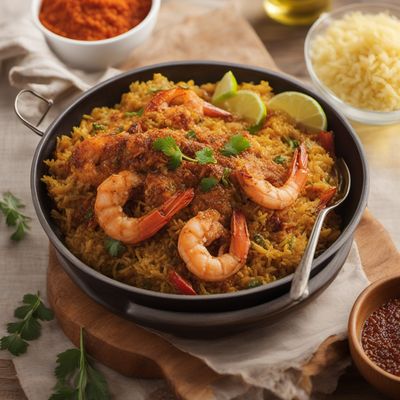
Mutabbaq Samak
Seafood Stuffed Pastry Delight